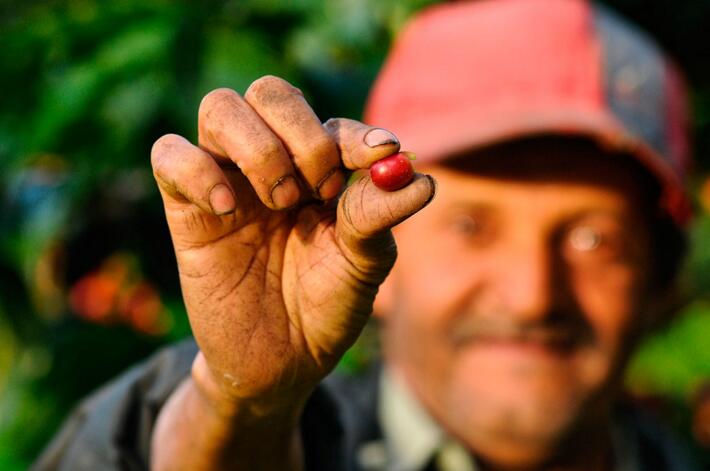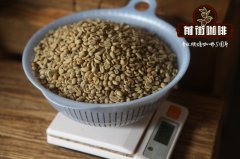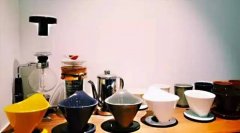What do some English words and numbers stand for on the name of coffee? how can you tell the difference between them?

Professional coffee knowledge exchange more coffee bean information please follow the coffee workshop (Wechat official account cafe_style)
We often see some English words and numbers on the names of coffee products.
Apart from representing names of origin, they also have English words like codes or combinations of English plus numbers:
For example:
Kenya AA Special 、 Colombia Supremo 、
Ethiopia Yirga Kochere G1 、 Sumatra Blue Batak Mandheling PB.
Friends who have just come into contact with boutique coffee must have this confusion:
Except for the names of producing countries and producing areas
How on earth am I going to understand these combinations of English or English numbers? What exactly do they mean?
What is the grading of coffee beans?
Usually when we look at individual coffee, we often see one or two acronyms in the long name, such as PB, AA, G1, etc., which actually represent the grade given to coffee beans by the producing country.
There is no universal coffee bean grading system on this earth.
The purpose of classification is to provide a rough benchmark at the time of transaction. It must be noted that there is no universal coffee bean grading system (draw the bottom line) on this earth. In fact, the name and basis of the classification is decided by each producing country. There are a few points that we must pay special attention to when discussing the classification system:
The standard of grading varies from country to country.
In some countries, the name of the grading system is the same, but the actual definition is not quite the same.
It is difficult to make cross-border comparisons because the systems are different and the characteristics of each country are different.
Grading is only a reference and is not the only or most critical factor affecting flavor.
What is the basis for grading?
The common criteria for grading coffee beans include the size of the bean itself, the shape, color or hardness of the bean, the ratio of defects, altitude, area of production, variety, treatment, feeling and quality of drinking, and so on.
The common way of grading coffee
Like many other species in the world, coffee has a wide variety, and its appearance is roughly the same, but there will be slight differences and characteristics with congenital conditions, growth environment, climate and treatment methods.
In different countries, there will be different ways of grading. These classification standards mainly come from the following key points:
1. Differences in the appearance of raw beans, such as size, shape, defect ratio.
two。 The environment in which raw beans grow and their effects, such as altitude and hardness.
3. After baking, it is judged by the quality of the cup.
Before coffee beans are processed and exported, each producer will grade them according to some key points:
1. Proportion of defective beans
The less the proportion of defective beans, the higher the grade of beans. Picking out defective beans is a very labor-consuming and time-consuming thing.
For example: Ethiopia's raw bean grade has G1~G5, must be G1, G2 is the washing quality grade, G3, G4 is the sun boutique grade, the general commercial bean is G4 grade. (in recent years, the preferred grades of many Ethiopian sun beans are also marked with G1 and G2.)
Defective bean
two。 The length and width (size) of the bean body
Such as: Colombia, Kenya.
Colombia takes "bean big is beautiful" as its purpose, grading is based on items, more than 18 mesh (about 0.7cm) is Supremo, and the following is Excelso.
(item represents the diameter of the coffee bean, one item is 1 inch 64 inch, 1 inch = 25.4mm)
A sieve used to determine the size of beans.
Kenya's grading is based mainly on the size of beans, supplemented by cup quality and bean weight.
For example, the highest quality grade is AA PLUS (AA+), followed by AA and AB (1516 orders, accounting for most of the output). Wait. In addition, there is PB, which means Peaberry, which is classified by appearance.
3. Altitude and hardness
For example, the producing countries of Central and South America except Brazil and Colombia.
For example:
Grade altitude mark
1 1350 to 1500 m SHB (Strictly Hard Bean) very hard beans
21200-1350m HB (Hard Bean) hard beans
There are also SH, EPW, PW. Wait.
The higher the altitude of the coffee tree, the harder the coffee beans will be. this is because factors such as low temperature, short sunshine and high humidity will make the coffee grow more slowly and produce fruits with higher density, and the flavor of coffee beans, such as acidity and sweetness, will be more saturated.
In short, the altitude has a great influence on the quality of coffee beans.
4. Cup test quality
Such as Brazil.
Although it is the largest coffee producing country in the world, among the coffee producing countries in Central and South America, Brazil's production altitude is on the low side, and the topography is flat, less shaded trees, and lack of microclimate, so the coffee beans produced are softer and smoother than other producing areas, so Brazil has switched to five grades:
Strictly Soft is extremely meek.
Soft compliant
Softish is a little softer.
Hardish is not easy to read.
Rioy smells like iodine choking.
Smart Brazilians use taste for grading. The Brazilian Coffee Excellence Competition, Cup of Excellence, which has been held since 1999, uses the mild and smooth low acidity, mellow thickness and sweetness of Brazilian coffee, as well as the overall presentation of nutty and cocoa flavors, as the basis for coffee evaluation. "the sweetness, purity and smooth finish of the entrance" has become a representative feature of Brazilian high-quality coffee.
Grading is an important consideration when we choose coffee beans; of course, raw coffee beans must be well preserved so that coffee farmers in the producing areas do not waste their hard work in planting and screening, and finally go through changes in roasting and brewing that vary from person to person. there will be millions of changes in the taste of coffee.
Filtered specifications
The screening work (Screening) is usually carried out with metal screens with different hole sizes. The basic unit is 1gamut 64 inches, which is called "mesh". The screen used to screen coffee beans is in the range of 8muri 20 meshes, that is, 8Compact 64MB 20mm. The smaller the number is, the larger the hole is. Usually less than 14 goals, there is no chance of becoming a boutique. In the process of screening, of course, there will be fish out of the net, and the allowable value of error depends on the standard adopted.
Good taste is the most important thing.
Because it is too important, so to say again: coffee tastes good is the most important, grading system is not the only factor affecting the flavor, its advantage is that it can make beans more evenly heated when roasting. In addition to classifying our online stores by baking degree, we can also search from the producing area. In addition, you can press "Select Flavor" on the right side of the screen to further screen according to your preferences:
Central and South America
Clean and clear, rich and varied, sweet and sour fruits, caramel, honey or chocolate
Africa
Distinctive personality, easy to identify, bright flower and fruit fragrance, dancing, instant blooming joy
Taiwan
The serious cultivation of small farmers in Alishan makes people think of the happy taste of hometown.
Special tone
Mellow taste, balanced flavor and long-lasting finish, suitable for all kinds of cooking methods
Important Notice :
前街咖啡 FrontStreet Coffee has moved to new addredd:
FrontStreet Coffee Address: 315,Donghua East Road,GuangZhou
Tel:020 38364473
- Prev

Knowledge about coffee raw beans classification and nomenclature of coffee in different countries
What exactly do G1, G2, G3, G4, AA, PB, SHB, SHG, EP and PLANTATION represent? The name of a coffee may contain messages such as country, producing area, variety, treatment, cup quality, bean order, bean shape or color, defect, raw bean density, etc. To really understand the naming of coffee, we must first understand the classification and classification of coffee. The grading of coffee
- Next

How to buy cost-effective coffee, from the manor, table of contents, aroma, flavor to teach you to choose
Professional coffee knowledge exchange more coffee bean information Please follow the coffee workshop (Wechat official account cafe_style) what is the key to a good cup of coffee? Good brewing skills and utensils are indispensable, but high-quality coffee beans are the most important element. Do you have no idea about coffee beans, or are you often dizzy by a bunch of coffee nouns? When buying coffee beans, except in the
Related
- Beginners will see the "Coffee pull flower" guide!
- What is the difference between ice blog purified milk and ordinary milk coffee?
- Why is the Philippines the largest producer of crops in Liberia?
- For coffee extraction, should the fine powder be retained?
- How does extracted espresso fill pressed powder? How much strength does it take to press the powder?
- How to make jasmine cold extract coffee? Is the jasmine + latte good?
- Will this little toy really make the coffee taste better? How does Lily Drip affect coffee extraction?
- Will the action of slapping the filter cup also affect coffee extraction?
- What's the difference between powder-to-water ratio and powder-to-liquid ratio?
- What is the Ethiopian local species? What does it have to do with Heirloom native species?

